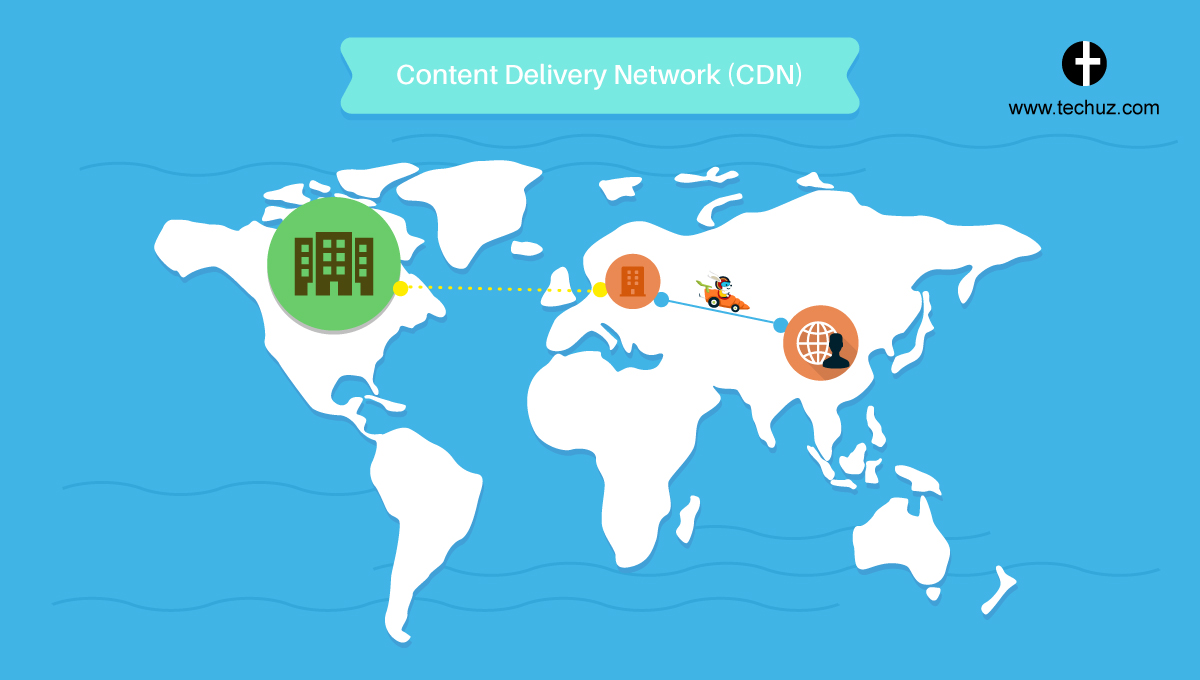Posted on
July 27, 2018
Updated on
March 21, 2024
Read time
 8 mins read
8 mins read
Speed and performance hold significant importance in the success of your web application. And when your entire business is online, I bet you don’t want to compromise with it. For any activity on the Internet, whether it be shopping, streaming videos, social media feeds or reading news, even a minimal lag can result in users abandoning your website.
Even you wouldn’t be reading this blog if it had taken time to load. No one wants to sit there and look at that annoying loading icon!
In fact, as per a stat, just 1-second delay in your page response can end-up in a 7% reduction in conversions.
“If an e-commerce site is making $100,000 per day, a 1-second page delay could potentially cost you $2.5 million in lost sales every year”
That’s a lot of money you can lose with just a blink of an eye!
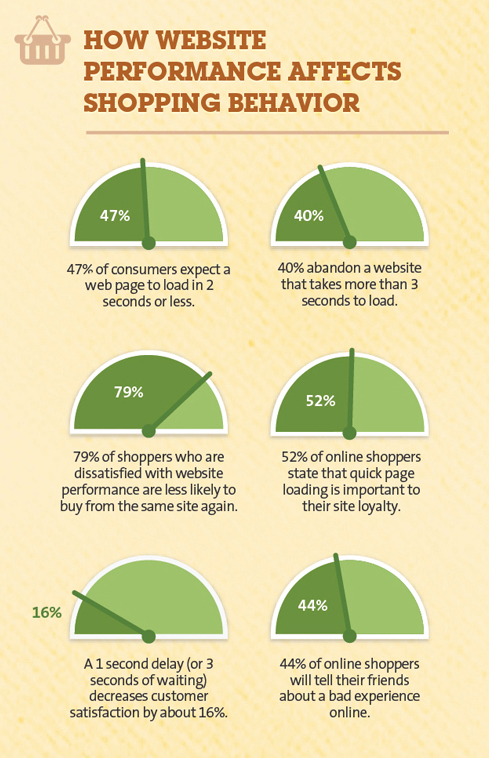
(Source – Kissmetrics)
As a web development company, people frequently ask us a question – “What must we do to boost your website’s speed?”
Suggested Read – How Much Does it Cost to Develop a Web Application?
To be honest, there are many complex factors that affect the performance of your app. And today we’ll be discussing one of the most crucial factors that can elevate your website’s speed, customer experience and provide you numerous benefits – Content Delivery Network.
If you are not familiar with this term, you must be scratching your head and wondering, “What is Content Delivery Network?”
Well, then read on to find out.
What is Content Delivery Network (CDN)?
Content Delivery Networks (CDN) are servers distributed at different geographical locations where information is cached from the origin server. These individual servers are known as Point of Presence (PoP).
Whenever a user visits your website, the request is sent to the nearest PoP which then routes the requested information (images, text, audio, video, etc.) back to the user. As CND Point of Presence (PoPs) are placed in such a way that they are near to the user’s location, they can send the response quicker than the origin server. As the result, the user receives the content with almost no network latency. In simple words, one can define the content delivery network as a group of servers strategically placed to deliver your content efficiently.
For instance, the transfer of request will take more time if a user in India sends a request to the website whose server is located in the US. Whereas, the same user can retrieve the information faster with the CDN PoP is in India itself.
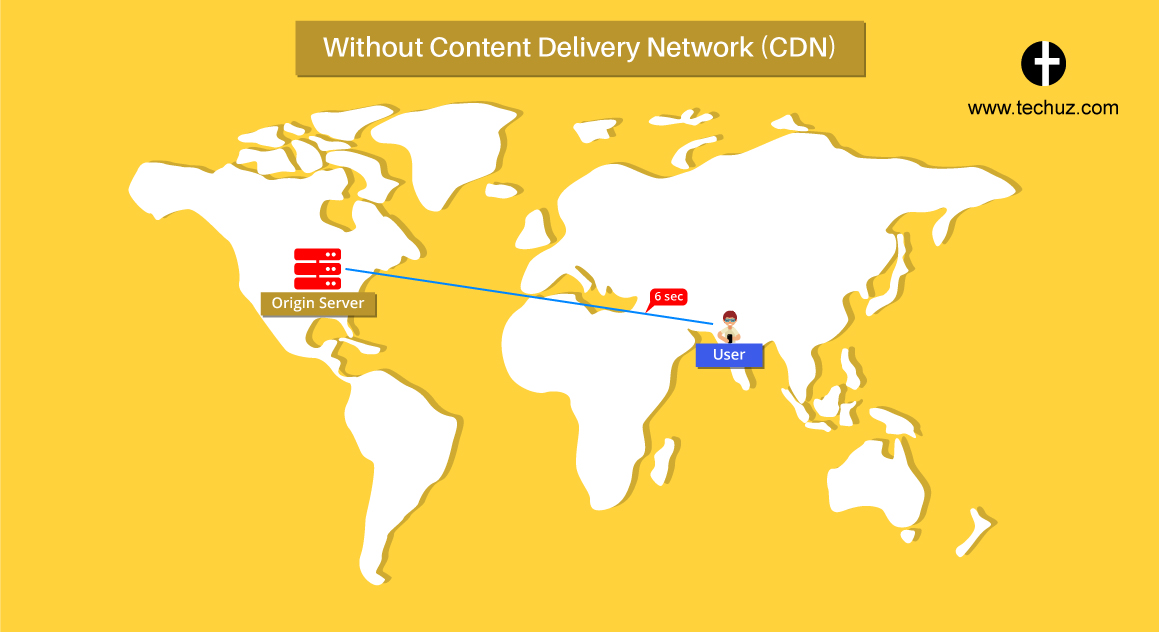
(User receiving content directly from the origin server)
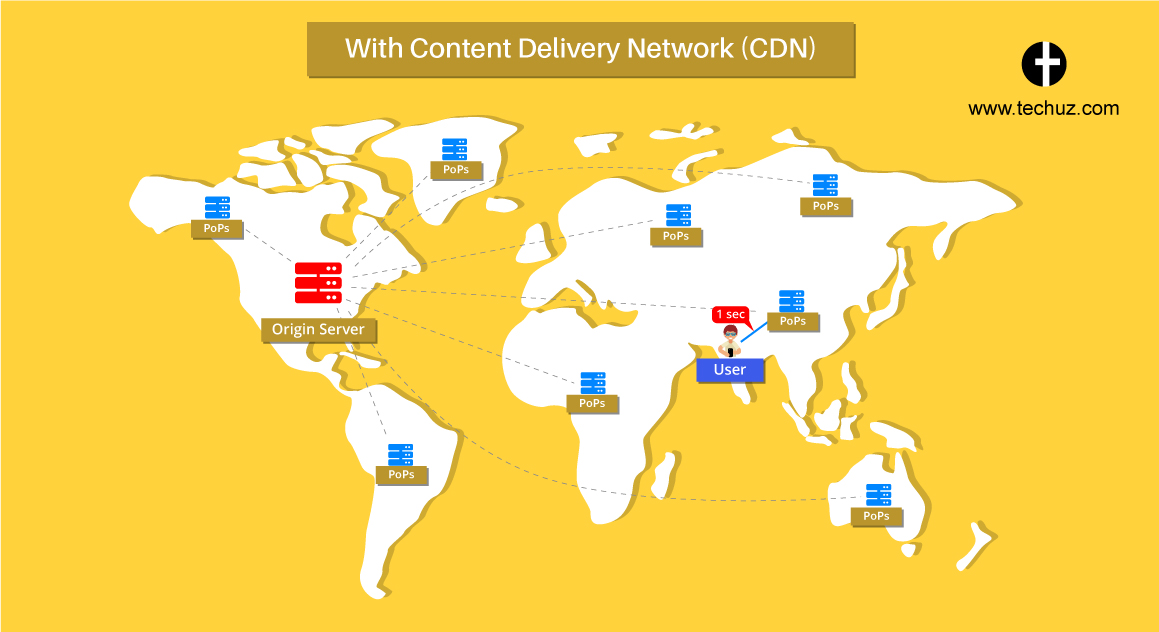
(User receiving content from a nearby server of the CDN service)
Content Delivery Networks have been used to boost the performance of the website since the 90s, but being highly expensive it was available just to a few corporate behemoths. However, along with the changing form and trends of digital content, the definition of CDN has changed. Content Delivery Networks are now more efficient, cheaper and they work under the hood for almost all websites on the internet. And the best part is CDNs comes with baggage full of benefits. As a top web development company in India, we have integrated various CDNs to our client’s web applications that have created exceptional results. Here are some of the amazing benefits of CDN.
What are the Benefits of Content Delivery Network?
#1. Boosts Page Load Time
The basic function of CDN is to reduce the network latency so that the content reaches to the users as soon as the request is sent. As the browser fetches the content from a nearby server and not from the origin server, the load time of the website or web app is significantly reduced. Tools like GTmetrix, Google PageSpeed and Pingdom can help you evaluate your website’s performance.
Here’s are some mind-blowing stats that depicts the importance of page load time.
 AliExpress observed an increase of 10.5% in orders and 27% new customer conversion by reducing the load time by 36%.
AliExpress observed an increase of 10.5% in orders and 27% new customer conversion by reducing the load time by 36%. YouTube’s traffic in weak connectivity areas (Southeast Asia, South America, Africa and Siberia) rose after they introduced pages that were 90% lighter.
YouTube’s traffic in weak connectivity areas (Southeast Asia, South America, Africa and Siberia) rose after they introduced pages that were 90% lighter. Walmart saw that their conversions increased up to a 2% if the load time was 1 second faster.
Walmart saw that their conversions increased up to a 2% if the load time was 1 second faster. By reducing page load from 15 seconds to 2 seconds, Intuit improved its conversion rate by 3% for every second reduced over 7 seconds.
By reducing page load from 15 seconds to 2 seconds, Intuit improved its conversion rate by 3% for every second reduced over 7 seconds. Yahoo spiked their traffic by 9% for each 400ms of improvement in load time.
Yahoo spiked their traffic by 9% for each 400ms of improvement in load time. Shopzilla’s observed a 12% increase in conversion rate and a 25% increase in page views by reducing 5 seconds of load time.
Shopzilla’s observed a 12% increase in conversion rate and a 25% increase in page views by reducing 5 seconds of load time. Mozilla gained 15.4% more downloads by reducing 2.2 seconds of load time.
Mozilla gained 15.4% more downloads by reducing 2.2 seconds of load time. A mere one-second delay dropped 2.8% revenue while two-second delay resulted in a 4.3% drop to Bing.
A mere one-second delay dropped 2.8% revenue while two-second delay resulted in a 4.3% drop to Bing. Amazon observed a 1% drop in revenue for every 100ms increase in load time.
Amazon observed a 1% drop in revenue for every 100ms increase in load time.
#2. Enhances User Experience
User experience is one of the key factors that can help you boost your website’s conversion. So, it’s a smart move to provide an ultimate user experience. Stats by Akamai revealed that 47 percent of consumers expect a web page to load in two seconds or less. Content Delivery Network improves the user experience by improving your web app’s performance and load time.
#3. Google Search and SEO Benefits
Although relevancy is the main criteria that would put your website higher on the search engine, page speed will also be a ranking factor for mobile searches. As a part of the efforts to provide the best user experience, Google has announced changes in its algorithms. According to the update, your website speed will be affecting the Google search rankings. The quicker the website the higher in the search result. Moreover, CDN also helps to reduce the bounce off rates that brutally affects your SEO.
#4. Manages High Traffic
Content Delivery Network works as a traffic cop helping you to balance the traffic of your website. Generally, during peak hours, the network load inflates due to the high number of visitors. As a result, the server slows down affecting the performance of your website. CDN helps to handle this large amount of traffic by diverting the users to different servers. Thus, the load is distributed efficiently that reduces the chances of downtime.
#5. Reach out to Global Market
The number of internet users has been significantly increased in the past decade. “As of the most recent reported period, the number of internet users worldwide was 3.58 billion,”, Statista states in its latest report. This huge number of internet users brings a new opportunity for your business. However, to explore this unfathomable market you’ll need an impeccable delivery of your service through internet and CDN does it for you. With its PoPs all over the world, CDN makes your business available in every corner of the globe as if it is a local business. Thus, your business reaches to the new unexplored markets.
#6. Valuable Data and Analytics
Popular Content Delivery Networks like Akamai, Cloudflare, MaxCDN, KeyCDN and more provides you with valuable data and critical insights that can help you to improve your services. Akamai offers features like Realtime-User Monitoring and Media Analytics that can monitor the performance and engagement metrics as well as provides insights about the behaviour of the audience. Thus, allowing you to understand the performance of your website and user activity in a better way that can help you formulate your sales and marketing strategy.

(Source – KeyCDN)
#7. Reduces Costs
CDN efficiently reduces many costs that the website owner has to incur such as bandwidth costs. It significantly reduces the amount of bandwidth by caching and optimizing the content in different PoPs. It is an efficient solution that enhances the performance, manages traffic, reduces bandwidth and distributes the content globally, all that cost-efficiently.
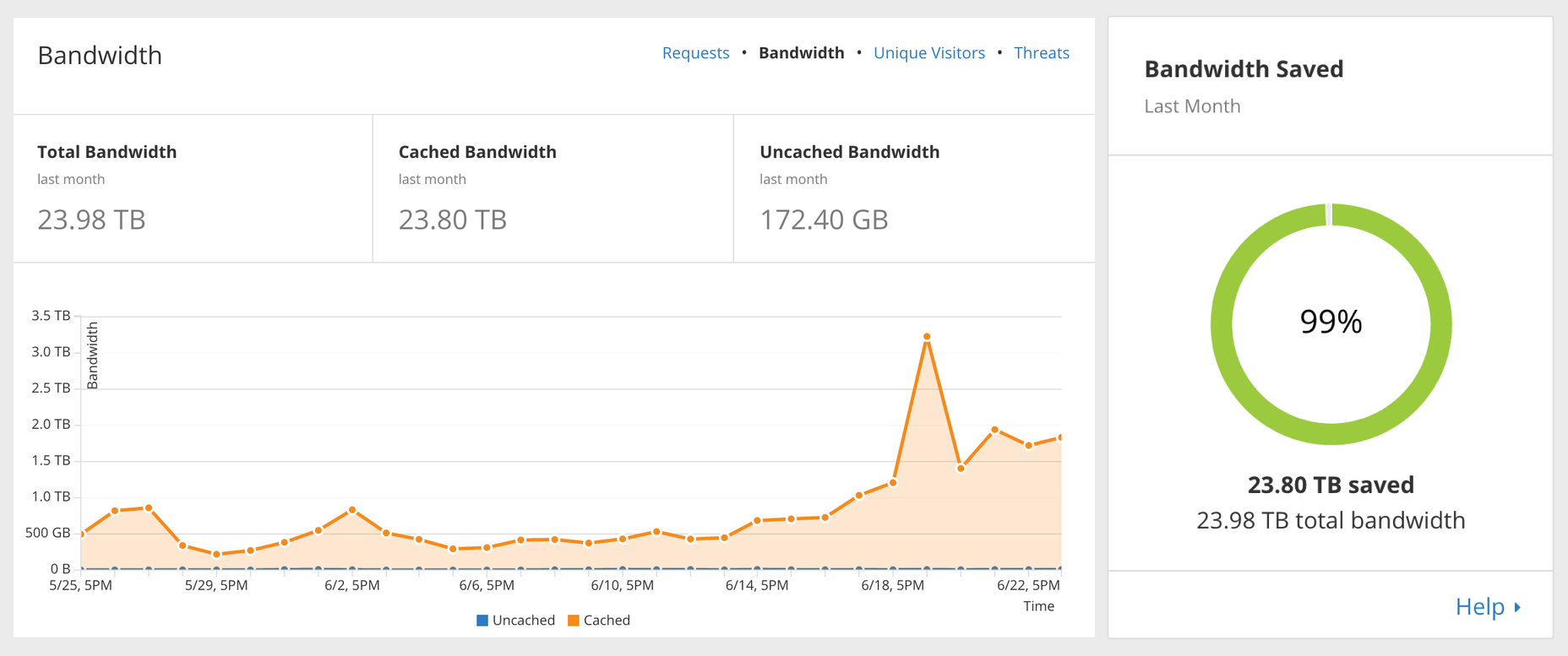
(Source – CloudFlare)
#8. Better Security
The Internet is a big pool of precious data where millions of transactions are carried out on an everyday basis. No wonder why cybersecurity must be a top priority for most of the website owners. As our dependency to carry out day-to-day activities via the internet continues to grow, cybercrime has emerged as one of the most dreadful problems. In fact, Cybersecurity Ventures has predicted that cybercrime damages will cost the world $6 trillion annually by 2021. In order to curb this nuisance, CDNs have emerged as a promising solution against it. CDNs provide protection against cybercrime activities like data breaches, DDoS attacks and man-in-the-middle-attacks through Web Application Firewall (WAF) and SSL / TLS.
#9. Guards Against DDoS
Contrary to its traditional utility, Content Delivery Network now provides security to the website and web application. In the past few years, CDN has been evolved as a custodian against the ever-increasing internet threats of DDoS that disrupts infrastructure. CDN abates the intensity of the attack by absorbing it across numerous distributed PoPs, which without CDN, could take down the origin server. Hence, protecting the origin server and data against DDoS.
Wrapping Up
Every day we interact with the websites and web applications that are connected to Content Delivery Network. The blogs we read, e-commerce stores, online news, social media and streaming services, etc. all of these are connected to CDN. Undoubtedly, it has become an integral part of the internet, making it more efficient. Content Delivery Network has not only emerged as a solution to overcome the issue of latency but also guards the web applications against the ever-increasing cybercrime. With the significant change in the web world, the content type and the way it is consumed, CDN will play a major role in deciding the success of web applications and websites.
